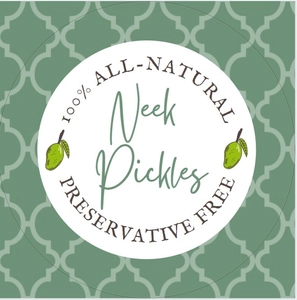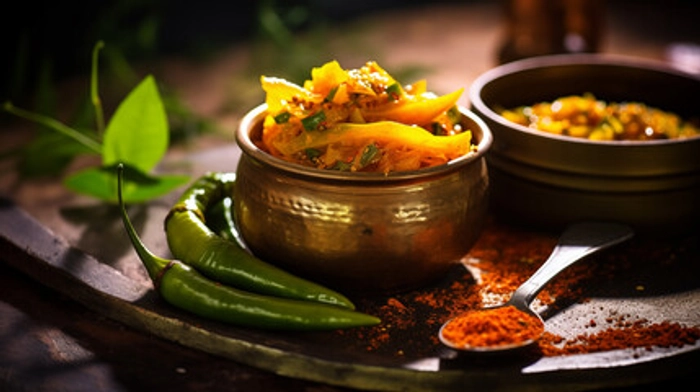The Timeless Tradition of Indian Pickles: A Journey from the Indus Valley Civilization to Modern Kitchens
Indian cuisine is renowned for its bold flavors, intricate spices, and vibrant dishes that tantalize the taste buds. One culinary gem that has stood the test of time and remained an integral part of every Indian household is pickle or achaar. From ancient history to modern kitchens, Indian pickles have evolved, but their cultural, culinary, and nutritional importance has remained steadfast. The roots of this tradition can be traced all the way back to the Indus Valley Civilization, making pickling a practice older than most global culinary traditions.
The Origins: The Indus Valley Civilization and the Beginnings of Pickling
The history of Indian pickles dates back over 5,000 years, to the time of the Indus Valley Civilization (circa 3300–1300 BCE), one of the world's earliest urban cultures. Archaeological findings suggest that the people of this ancient civilization were among the first to practice food preservation techniques, including pickling.
The Indus Valley people had a profound understanding of food storage and preservation, which is crucial in a region where seasonal variations in food availability could be extreme. They used pickling to preserve fruits, vegetables, and meats for the harsh, non-harvest months. Salts, spices, and oil, which are the backbone of today’s pickling techniques, were abundant in the Indus Valley and were employed to prolong the shelf life of perishable items.
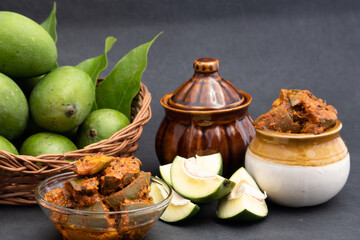
The Evolution of Pickling: From Ancient Techniques to Regional Flavors
As Indian civilization evolved, so did the methods and types of pickles. While the basic principle of pickling—preserving food in brine, vinegar, or oil with the use of spices—remained unchanged, the types of ingredients used and the flavor profiles diversified greatly, influenced by local climates, agriculture, and cultural traditions.
By the time the Vedic period arrived (around 1500 BCE), the art of pickling had spread across the subcontinent. The availability of spices such as mustard, fenugreek, cumin, turmeric, and asafoetida began to shape the distinctive regional styles of pickles. For instance, in the western state of Rajasthan, where the climate is arid, pickles made with oil and spices like mustard seeds became an essential part of the diet, offering not only preservation but also a vital source of fat and flavor in an otherwise dry landscape.
In the southern regions, pickles like mango achar, lemon pickle, and tamarind pickle became staples, thanks to the abundance of tropical fruits and the influence of diverse cooking styles. In the east, Bengali pickles, often known for their mustard-based preparations, found favor, with a variety of fruits and vegetables being pickled with a generous use of mustard oil and spices.
The Role of Pickles in Indian Culture and Cuisine
Pickles, or achaar, have always held a place of reverence in Indian households. They are much more than just a side dish; they are a symbol of tradition, a marker of seasonality, and a reflection of regional identity. In India, pickles are passed down from generation to generation, often prepared in large quantities during the summer months when fruits like mangoes, lemons, and limes are in peak season. The preparation of pickles is seen as an act of patience and care, with the final product becoming an integral part of every meal.
In rural India, pickles are often prepared by women in the household, and the recipes can be highly guarded secrets, known only to the elders. This tradition of homemade pickling is not just about food preservation but about maintaining family heritage, with each recipe containing nuances passed down through centuries.
The Nutritional and Health Value of Pickles
Apart from their unique flavors, Indian pickles have long been recognized for their nutritional value and health benefits. The combination of spices and fermentation involved in the pickling process offers a variety of medicinal properties:
-
Probiotics: The fermentation process involved in pickling, especially with certain vegetables, enhances the growth of beneficial bacteria in the gut. These probiotics can aid digestion and improve gut health.
-
Rich in Antioxidants: Ingredients like turmeric, mustard, and fenugreek, commonly used in pickling, are rich in antioxidants. These spices help fight oxidative stress and inflammation in the body.
-
Boosts Immunity: The high vitamin C content in pickled fruits like lemons, amla (Indian gooseberry), and mangoes boosts the immune system and helps in warding off infections.
-
Aid in Digestion: The spices used in Indian pickles, including ginger, garlic, and asafoetida, are known for their digestive properties. They stimulate the digestive enzymes and improve metabolism, making them an excellent accompaniment to heavy meals.
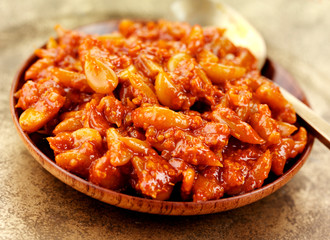
Decline and Revival: The Modern-Day Pickle Dilemma
Despite their historical significance and health benefits, the traditional art of pickling in India faced challenges in the modern era. With the advent of refrigeration and industrialized food production, many traditional practices of homemade pickling began to fade, particularly in urban centers. Commercially produced pickles, often loaded with preservatives and artificial colorings, began to dominate the market.
However, in recent years, there has been a resurgence of interest in artisanal and homemade pickles. A growing awareness of the importance of natural, chemical-free food has led people to rediscover the authentic taste and health benefits of homemade pickles. Many urban dwellers are now experimenting with traditional recipes passed down from their ancestors, using organic ingredients and sustainable practices.
Moreover, global recognition of Indian cuisine has led to a renewed interest in pickles. As Indian food culture spreads worldwide, the distinct tanginess, heat, and complexity of Indian pickles have captured the imagination of food lovers across the globe. Today, you can find Indian pickles in gourmet stores and on restaurant menus, often paired with dishes far beyond the traditional Indian context.
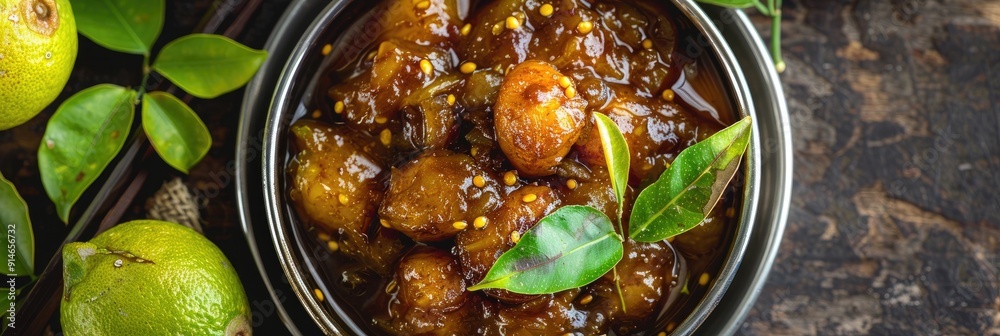
Conclusion: A Tradition That Lives On
Indian pickles, with their rich history and vibrant flavors, remain an integral part of the country’s culinary fabric. From their origins in the ancient Indus Valley Civilization to their evolution into the diverse regional varieties we enjoy today, pickles have played an essential role in preserving both food and culture. Whether enjoyed as a spicy accompaniment to a simple meal or as a cherished family recipe, pickles are much more than just a condiment—they are a connection to India’s past and a celebration of its diverse flavors.
As we continue to seek out natural and sustainable food practices, the art of pickling in India will likely thrive, passing from one generation to the next, with every jar holding a story of the past and a taste of the future.
